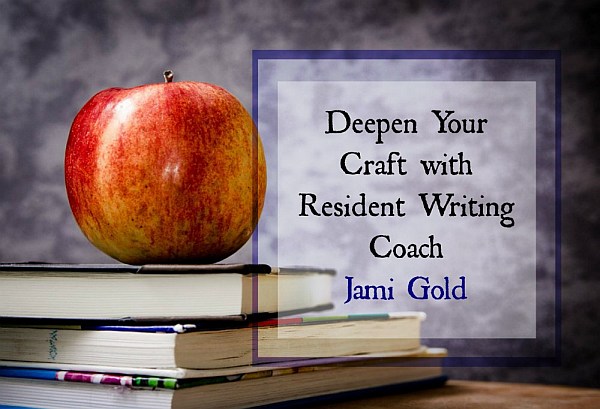When Should We Treat Our Setting as a Character?

It’s time for another one of my guest posts over at Angela Ackerman and Becca Puglisi’s Writers Helping Writers site. As one of their Resident Writing Coaches, I’ve previously shared:
- insights on how to approach an overwhelming revision
- how to increase the stakes (the consequences for failure) in our story
- 7 ways to indicate time passage in our stories (and 2 issues to watch out for)
- how to translate story beats to any genre
- how and why we should avoid episodic writing
- how to find and fix unintended themes
- how “plot” holes can sneak into our characters and worldbuilding
- how TV shows can help us learn to hook our readers
- what we can learn from stories that successfully break the rules
- how to ensure revisions aren’t creating rips in our story
- how to create strong story goals that won’t slow our pacing
- how to keep readers supportive through our characters’ changes
- how to use bridging conflict to kick off our story’s momentum
- how to create the right pace for our story (and make it strong)
- how to make the “right” first impression for our character
- what options we have if our story doesn’t fit the usual approach to conflict
- 3 ways to improve our use of tropes (because they aren’t all bad)
With this turn for another coaching article at WHW, I’m exploring some common advice about the settings of our stories. Why might we want to apply (or avoid) the advice to think of our setting as a character — and how can we know which path is best? Let’s take a look…
What Does “Treat Your Setting as a Character” Mean?
Most of us have probably read stories where the setting feels like a real place in our imagination. In recent years, the Hogwarts castle of the Harry Potter series has been a frequent example of this type of well-developed setting.
With our characters, being well-developed means that readers see them as real, three-dimensional people. People they root for. People they could imagine being friends with. People they form emotional connections to.
Those same ideas can apply to settings if they’re well-developed enough. Readers hated seeing Hogwarts under the control of the bad guys. Readers so strongly imagined that Hogwarts felt like a real place that people talked about waiting for their invitation letter. In short, readers formed an emotional connection to the setting.
That’s what’s meant by thinking of our setting as a character. We can develop the sense of place so strongly that the setting comes alive in readers’ imagination.
What Are the Benefits of a Well-Developed Setting?
Think of the real purpose of the writing “rules”/guidelines that we pay attention to while drafting and editing. From a deep point of view that pulls readers further into the story’s events to smooth sentences that don’t push readers out of the narrative flow with a speed bump, the goal of most writing advice is to increase the emotional connections between our readers and our story.
Heard the writing advice to treat your settings like characters? Here's what that advice means—and whether we should follow or ignore it… Click To TweetNo matter our genre, one of our main goals as we write is to make readers feel something as they read. They should feel for our characters, or feel echoes of what our characters experience, or feel emotions based on the predicaments and events of the story itself.
The more connections a reader feels to the story, the more likely they are to continue reading. Heck, some will even finish a book they’re “hate reading” because of the emotional connections they feel, as negative emotions can be a connection too. *smile*
So a setting that’s well-developed enough to create connections with the reader is a good thing to have. Even if our readers don’t care for our characters or feel meh about the plot, they might keep turning pages to find out what happens in this world they feel connected to.
Can Readers Really Feel Emotionally Connected to a Setting?
As I mentioned above, many of us can relate to the connection to Hogwarts and wish for our own invitations. Or to expand on an example brought up in my guest post, I originally came up with the idea for this post after tripping over a link to the HGTV Brady Bunch renovation. For those unfamiliar with the story…
(I’m so restraining myself from making a “Here’s the story…” joke right now. *grin*)
The Brady Bunch sitcom ran in the U.S. in the early 1970s, and kids of multiple generations later grew up on reruns. Recently, the HGTV cable channel spent millions to purchase, gut, and rebuild the house used for exterior shots so that it’d match the interior of the studio sets, and the show they created to follow the renovation process became their highest rated series ever due to all the fans eager for nostalgia of “revisiting” the setting.
Every room in the Brady Bunch house contained some aspect that was considered iconic, from the floating staircase backed by a Mondrian-style window to the unabashedly peak 1970s bright orange laminate and avocado-green cabinets in the kitchen. Everything about the house is memorable and recognizable to those who have “visited” it before.


In fact, the house is so recognizable that most of those who had ever seen the show knew that Marvel/Disney+ WandaVision‘s third episode was influenced by The Brady Bunch just because of the set design. Although the layout is a bit different, the double doors and stone wall at the entry, along with the color-block window and open stairs make the inspiration obvious.

Why Would We Ever Avoid a Well-Developed Setting?
Given all the potential positives, why would we ever avoid fleshing out our setting? The fact is that not every story is a good fit for a well-developed setting.
Our story might not use recurring settings (think of a road trip type of story), so the most we can do is develop our story world rather than any specific place.
Or our story’s focus might be so much on the characters or the plot that the setting needs to be kept simple for word-count or limiting-distractions sake.
Or our story’s theme might require a “generic” setting, emphasizing how the events could happen anywhere. And so on…
Writers Helping Writers: Resident Writing Coach Program
Developing Settings: Should We Think of Our Setting as a Character?
How can we tell when we should follow or ignore the advice? Come join me at WHW above, where I’m sharing:
- how our setting ranks one of the main building blocks of our story
- why some stories don’t need strong settings
- how to determine how developed our settings should be
- resources for developing our setting
- 4 aspects of our setting that we can think of like a character
What story settings have you felt connected to? Can you think of other benefits that come with a well-developed setting? Can you think of other reasons we might not want a well-developed setting? (My WHW posts are limited in word count, but I’m happy to go deeper here if anyone wants more info. *smile*)
Pin It
This is great and good timing for me as I start a new series. Got some cool ideas for the settings.
Hi Kass,
Oh fun! Saving ideas for settings is pretty much which got me to start on Pinterest. LOL!
As a child I read the My Friend Flicka books and Silver Brumby books, which realised the natural world and American / Australian cattle ranches strongly. I definitely wanted to go!
Hi Clare,
Great point! Well-developed settings can create such strong connections that if the locations exist in the real world, we want to visit and see them for ourselves. 🙂 Thanks for sharing!
Hey Jami! Most of my stories are in fantasy or sci-fi settings, and could be what you might call high fantasy or high sci-fi. So yes, setting is important! I keep feeling that I’m not putting enough detail into my settings. For my sci-fi novel set in the distant future on another planet, it was odd that I got different feedback. Some readers thought I had enough detail, some readers thought I had too much detail, and some thought there wasn’t enough detail, LOL. Not sure what to make of that! However, aside from helping readers to anchor themselves into the story and not feel lost, settings can certainly feel like a character, too. I like your point-by-point comparison of a setting to a character, with backstory, conflict, changes, mood and emotion, etc. Not sure if I mentioned this to you before, but I notice that I’m more sensitive to some aspects of setting than others. I’m usually not that attuned to the visual details, unless it’s about color and movement. But I seem quite sensitive to tactile descriptions, sometimes the auditory surround, and of course, the emotions in the setting. I don’t remember exactly how the Misty Mountains look like, despite how incredibly detailed Tolkien’s descriptions were, lol. But I do remember the gloom, the darkness, the ominous and thick mist, and the chill. The Mirkwood (the forest in The Hobbit) was also very vivid. I don’t recall the precise details, but the dense, suffocating, and threatening atmosphere is… — Read More »
Hi Sieran,
As with most things writing, our author style isn’t going to appeal to everyone, so feedback that ranges from too much to not enough might mean it’s perfect. LOL! You could also try asking your readers what their impressions are of your settings (such as serene, eerie, lush, etc.). If they’re coming away with the impression you want, then you’re likely doing your job just fine. 😉
I’m with you in connecting most to the atmosphere and history/events of a place, and those can be related too. For example, the mystery of what happened to the dwarves of Moria helped make the emptiness more spooky and tense to me. Thanks for stopping by!